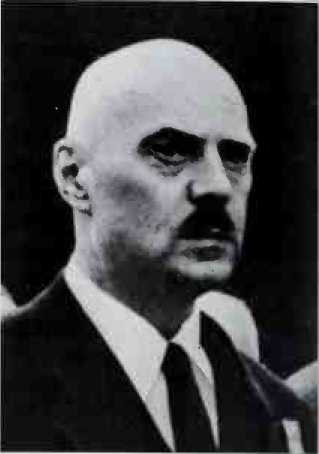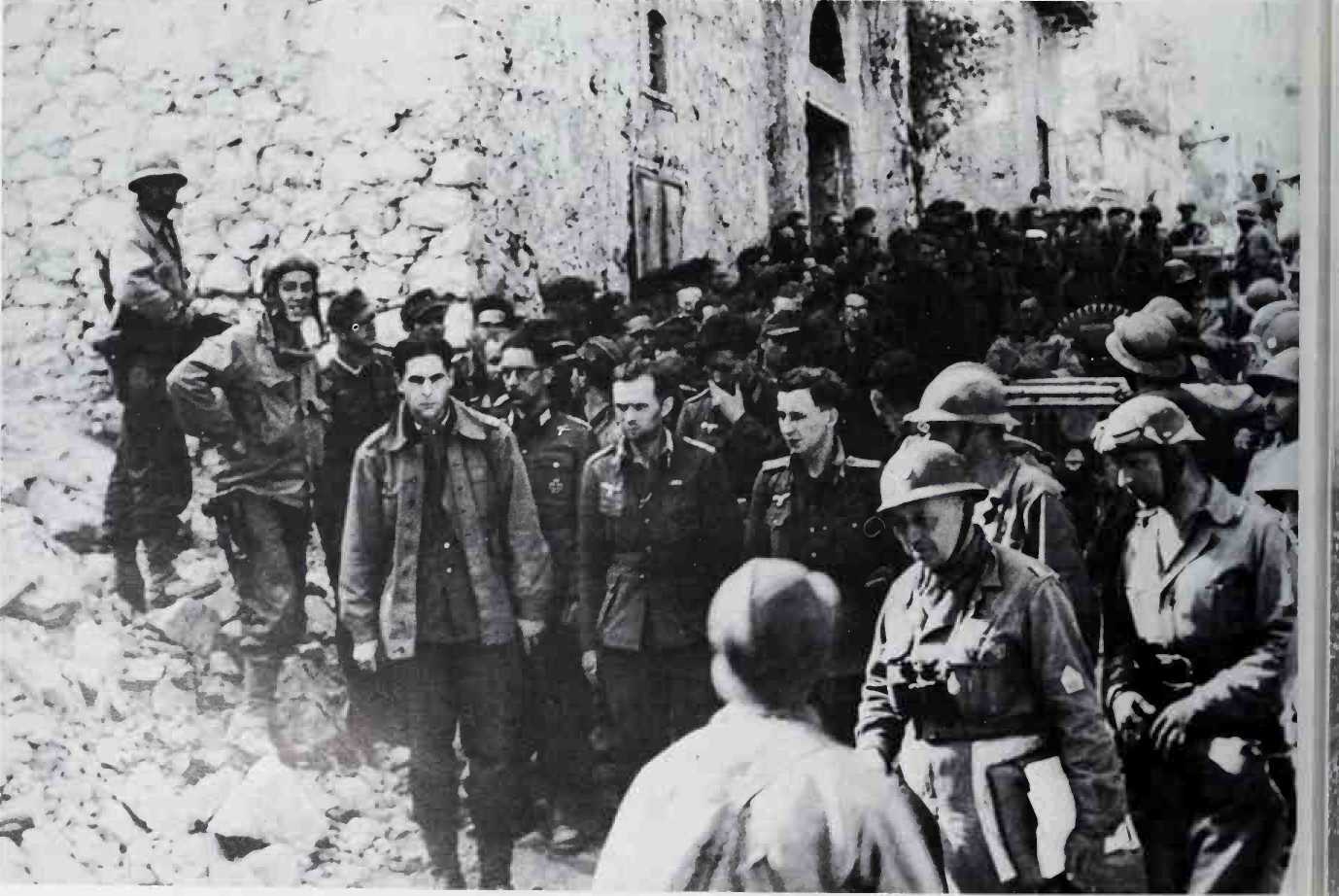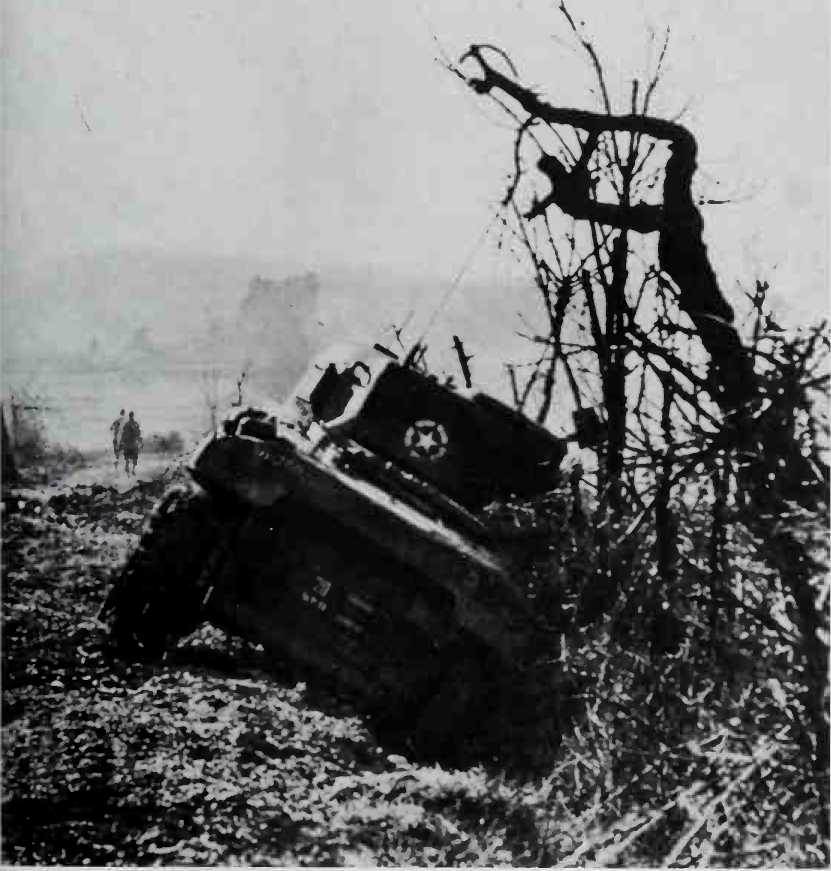At 2300 hours on May 11, 600 Allied batteries (2,400 guns ranging from 25-pounders to 9.4-inch) opened up simultaneously on a front of some 25 miles. At midnight the Allied infantry moved forward. When dawn broke both General Leese and General Clark had to admit that in spite of the surprise effect the night attack had not brought the expected success. The Polish II Corps (General Wladislas Anders: 3rd "Kressowa” and 5th "Carpathian” Divisions) had failed on the slopes of Monte Cassino and, for all the fighting spirit shown by these men, escapees from Russian jails, their losses were very heavy. In the Liri valley the British XIII Corps (Lieutenant-General Kirkman) had got two of its divisions across the Rapido, but without really denting the resistance put up by LI Mountain Corps (General Feuerstein) and here again 1st Parachute Division was particularly successful.
Though the French Expeditionary Corps had been strengthened by the 4th Moroccan Mountain Division (General Sevez) and the 1st Motorised Infantry Division (General Brosset) its task was not made any easier by the fact that the enemy opposite(71stDivision: Lieutenant-General Raapke) was ready and expecting to be attacked. During this night operation, which they were ordered to carry out so as to facilitate the British XIII Corps’ crossing of the Rapido, the French stumbled on to minefields and were attacked by flame-throwers. By the end of the day on the 12th it was feared that the

A General Anders, whose Polish troops were responsible for the final success at Cassino.
V French troops with their German prisoners at Castel-forte

V The Liri valley, before Cassino. In the foreground is a knocked-out Sherman tank. Overleaf: (top) A road on the way to Rome under German shellfire; (bottom) the swift Allied advance once the obstacle of Cassino had been removed.

French attack might have run out of steam and that Kesselring would have time to occupy the whole of the Petrella massif. Without losing a minute. General Juin reshaped his artillery attack so as to concentrate everything on the Monte Majo bastion. This bold stroke broke the resistance of the German 71st Division and in the afternoon of May 13 the Moroccan 2nd Division raised an immense tricolour on the top of the 3,000-foot hill. On its right the 1st Moroccan Motorised Infantry Division had cleared out the bend in the Garigliano. On its left the 3rd Algerian Division had captured Castel-forte and was moving forward towards Ausonia.




 World History
World History









